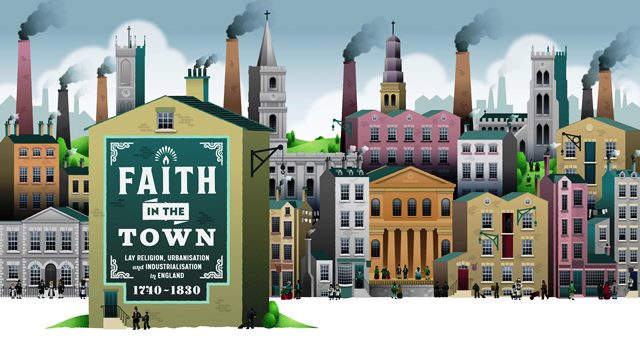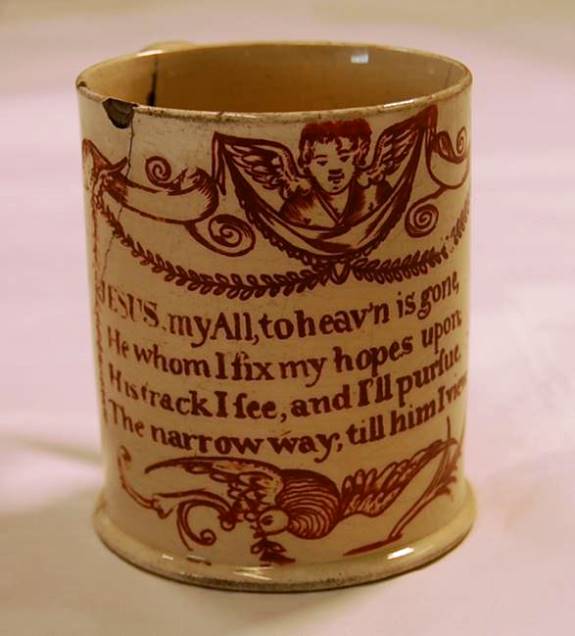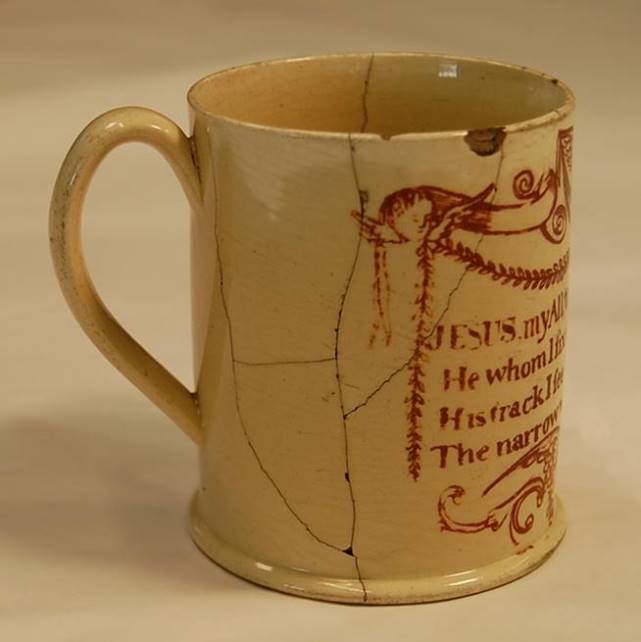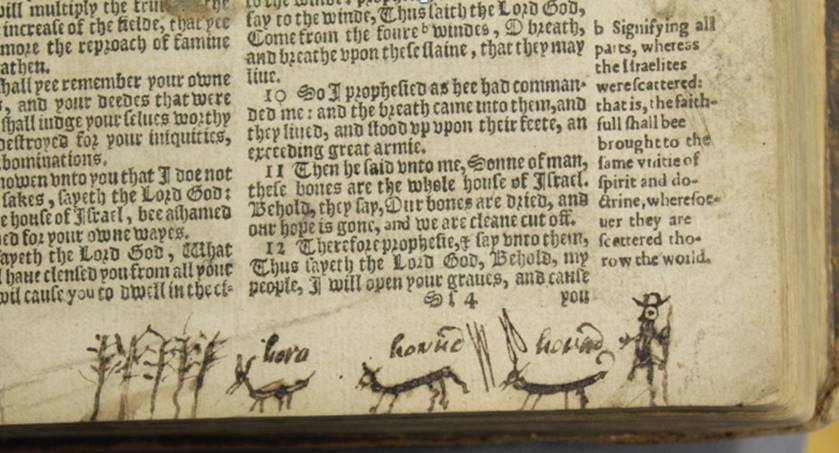
Dr Hannah Barker introduced us to a completely new branch of history - understanding the thoughts and beliefs of large sections of the populace at any one time by examining and analysing the artefacts they used and enjoyed in their everyday life. She used a project, she is working on with colleagues from various institutions, to show how this can be carried out and the results that can be gleaned from it.
The project was titled succinctly as “Faith in the town” and the object was to examine the extent and depth of religion in the newly urbanising areas of northern England 1740 to 1830. This was a key region at a key time - the beginning of the industrial revolution and the accompanying social change that went with it.
 click the image to see the reverse of this Wedgwood teapot printed by Guy Green, 1770-80, 17 x 10 cm, Walker Art Gallery, Liverpool, M2221.
click the image to see the reverse of this Wedgwood teapot printed by Guy Green, 1770-80, 17 x 10 cm, Walker Art Gallery, Liverpool, M2221.
The concentration was on everyday items that would be found in a great many households. But these were items that could be linked to a religious topic or theme in some way. For example a mug with the verse of a hymn, a teapot with an aphorism by John Wesley or wall plaques carrying a religious tract. Many of these were in the form of pottery as this was cheap enough to be widely purchased by most social classes yet high quality versions were equally popular in the homes of the middle and upper classes. China figurines, for example, were more expensive and therefore seen in fewer households but they could still tell something about their original owner because of the form they took; what they represented.
 |
 |
National Museums Liverpool, Walker Art Gallery, Decorative Art Collection,
painted creamware mug, c. 1750-70, 8 cm diameter, 9 cm high
But it was not just china that could be used to extract information about people. Wills, particularly women’s wills, are very revealing. There are fewer wills written by women than by men but those that are tend to be much more informative about items and possessions, going into considerable detail about why they are important and why they are leaving them to particular named individuals.
Family bibles are often another rich source of information. Almost all families with a bible would list important births, marriages and deaths but in addition there are often commentaries, inscriptions or perhaps just simple notes, giving a window into the mood or the spirit at that time in that place.

Barnsley family’s of Sheffield’s copy of the ‘Breeches Bible’ (1613), Explore York Libraries and Archives
And it was not just bibles. Prayer books were a valued personal possession and other religious books. A particularly good example was Foxe’s Book of Martyrs. This would be referred to frequently because of the illustrations of torture and death as much as the accompanying text but it also had plenty of space for readers to leave their own comments and observations.
 Elizabeth Brown sampler (1814), Harris Museum and Art Gallery, PrestonEven more personal are samplers, created by young girls to demonstrate their level of skill but the interesting part is not the quality of the embroidery but the thoughts and hopes that are expressed upon it.
Elizabeth Brown sampler (1814), Harris Museum and Art Gallery, PrestonEven more personal are samplers, created by young girls to demonstrate their level of skill but the interesting part is not the quality of the embroidery but the thoughts and hopes that are expressed upon it.
So how were they able to find all these different types of artefacts. Many have been lost or broken with the passage of time. Others are preserved by the families themselves but these are usually difficult to find for that very reason. However, local museums and archives of one sort or another have been given or have acquired many examples of these. In fact they often have far more than they put on display and it was here that the project focused its attention. They are working with 24 museums and galleries throughout the north as well as 50 separate archives and libraries. The coverage is from Stoke in the south to Newcastle in the north; from Liverpool in the West to Hull in the east.
The range of different articles opened our eyes to this source of information. Indeed, we have a few examples in our own archives and perhaps we can begin to look at these in a new and fresh approach thanks to Hannah’s fascinating work.
project link: Faith in the Towns

